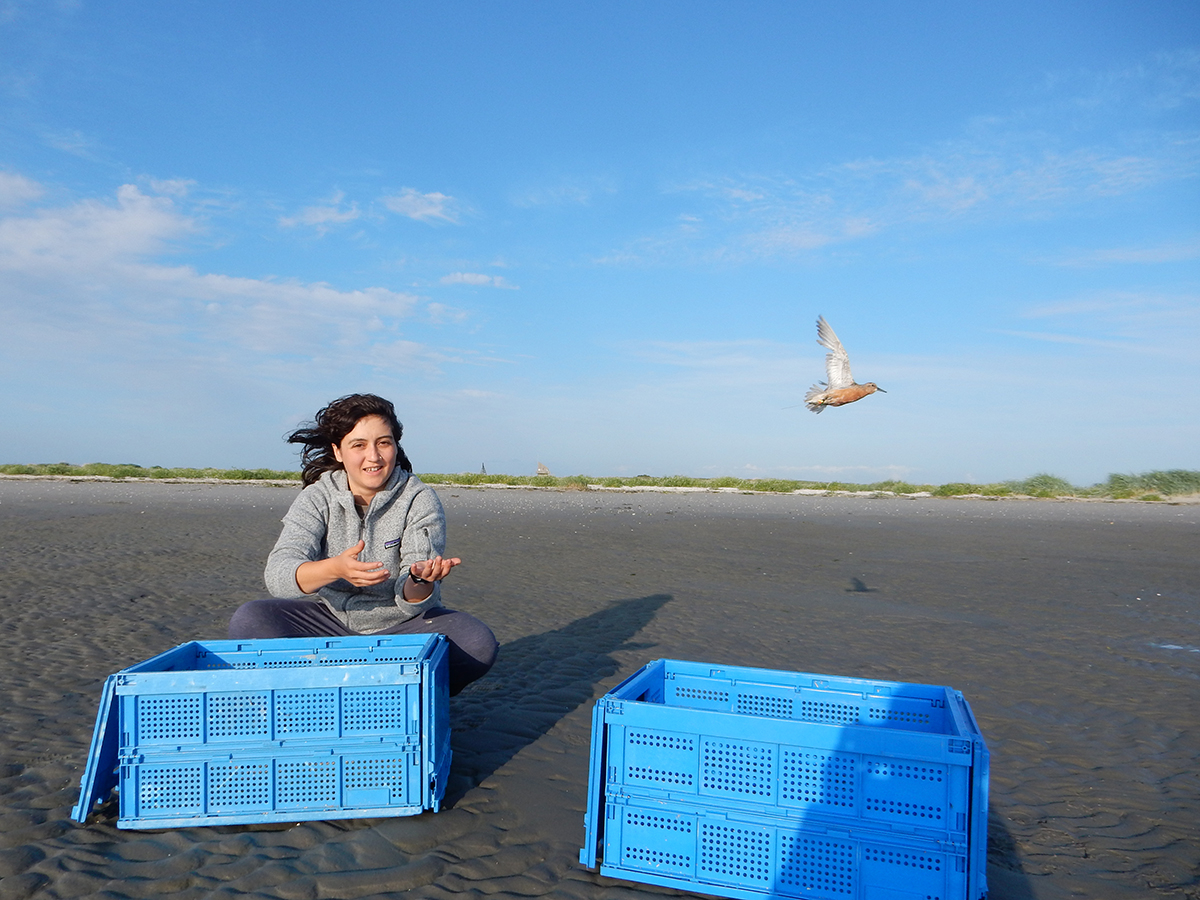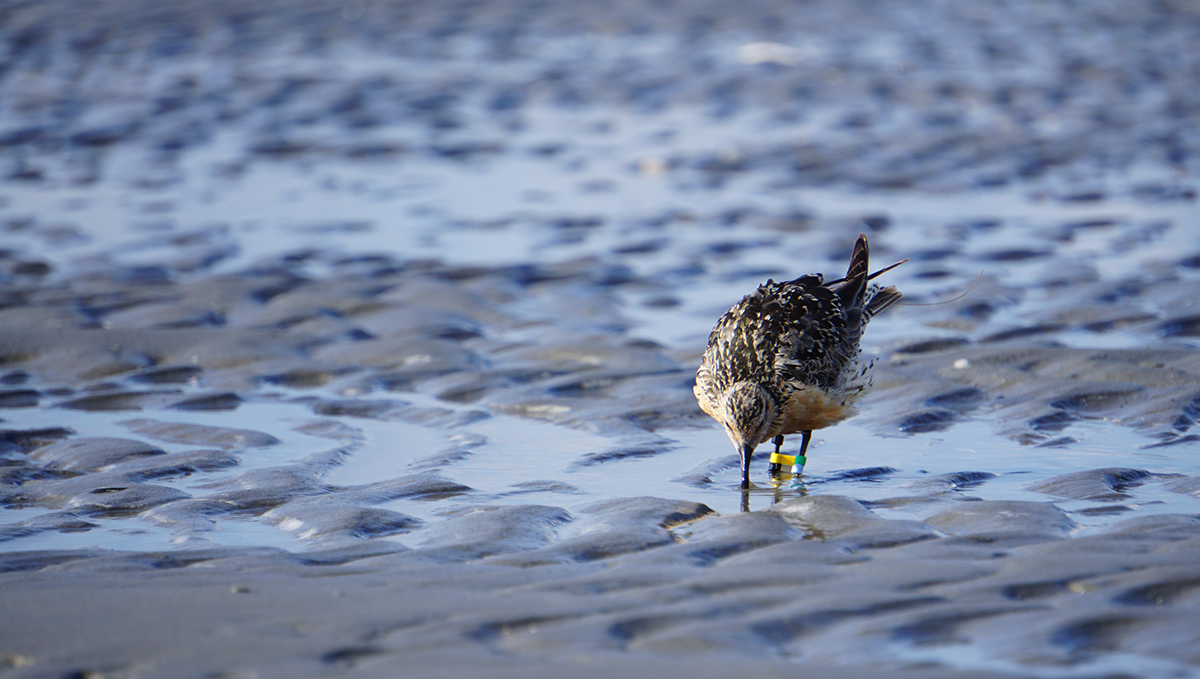Explorative behavior of Red knot
In the second week of August, the catching team of NIOZ caught 63 red knots with mist netting and temporarily housed them in field aviaries on the island Griend. Afterwards, we tested them in the field unit, which we developed last year, to investigate their personalities. This unit consists of a water basin with 4 sand patches. Based on their movement and explorative behavior, like switching patches and searching for food, we determine explorative behavior of individuals.
Where do the Red knots go?
After we tested their explorative behavior, we released them with a tag and color rings. The WATLAS system enables us to track the location of the tagged birds, which helps us to find them in the field. In the upcoming weeks we will search for the tagged red knots on the island Griend and make short videos of them. The videos we take in the field will give us insight in how the individual knots spent their time on the mudflat, where they search for food and what they eat.

What do Red knots eat?
Besides, where the Red knots go and search for food, we are also interested in what they eat. We investigate if individuals have different diets and if this is related to their explorative behavior. We take soil samples at places where they search for food and thereby determine the food richness and diversity of that spot. We also collect and analyze droppings of the Red knots to get insight in what the birds have been eaten.

Shorebirds live in threatened habitats in the world: their breeding grounds in the Arctic are influenced by rapid warming and the coastal wintering habitats are under anthropogenic pressures during non-breeding season. By investigating where they go, what they eat and how they behave we can identify whether and how they can adapt to environmental changes.
The field work on Griend is part of Selin Ersoys PhD project and will be carried out this summer by Selin and her assistant Dieke de Boer. For more information about the WATLAS and Red knot research, please contact Selin Ersoy (selin.ersoy@nioz.nl) and Allert Bijleveld (allert.bijleveld@nioz.nl).
By Selin Ersoy